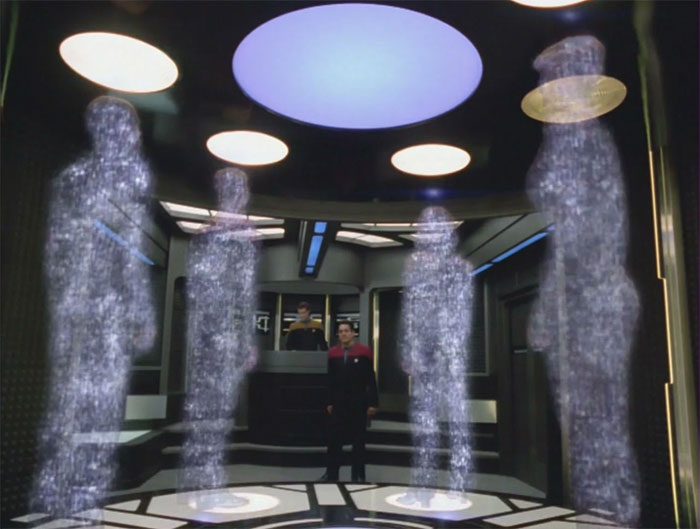Researchers have discovered a method for transmitting images instantaneously through a network without needing to physically touch the images.

A scene of teleportation in the movie Star Trek. (Photo taken from PARAMOUNT).
An international team of experts from the University of Witwatersrand (South Africa) and the Institute of Photonic Sciences (Spain) has successfully teleported images by utilizing laser light patterns and optical detection devices to receive and process quantum processes.
The principles of quantum physics allow the information of the images to be displayed on a terminal device without the need for physical movement from the sending device, according to the lead researcher, Professor Andrew Forbes from Wits University.
This achievement is just one potential aspect of quantum communication, an emerging scientific field that enables data to be transmitted over much greater distances than existing telecommunications systems.
In 2017, Chinese scientists made headlines by demonstrating the ability to teleport a single photon from the ground to a satellite in low Earth orbit, 1,400 km away.
With this latest breakthrough, researchers from South Africa and Spain continue to expand the potential of this new field but warn that this technology could be exploited by malicious actors to replicate information during transmission.
“We need to be cautious, as this new feature cannot prevent a sender from attempting to cheat and send additional copies of information that are better than the version being teleported. This means we could end up sending multiple copies of a character like ‘Mr. Spock’ as in the Star Trek movie, if that is what ‘Scotty’ wants,” said Dr. Adam Vallés from the Institute of Photonic Sciences.
The research on teleportation has been published in the journal Nature Communications.




















































